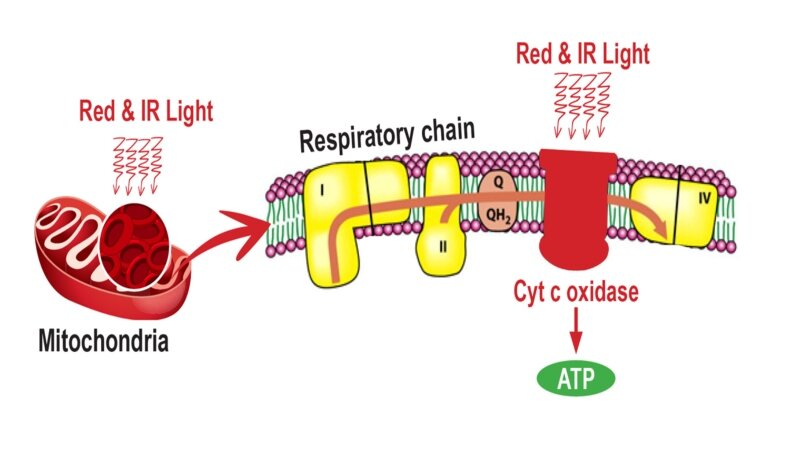Can Red Light Therapy Help Sciatica: Exploring the Evidence
Introduction
Red light therapy, also known as low-level laser therapy (LLLT) or photobiomodulation therapy, is gaining attention as a potential non-invasive treatment for managing sciatica. This article delves into the question of whether red light therapy can help alleviate symptoms of sciatica. We’ll explore the scientific evidence, detailed mechanisms behind red light therapy, its potential benefits, and how MedCareLine aims to support sciatica patients through informational resources.
Understanding Sciatica
Sciatica is a condition characterized by pain, numbness, or tingling sensations that radiate along the sciatic nerve. Mostly stemming from compression or irritation of the nerve due to factors like herniated discs, spinal stenosis, or muscle spasms. It can significantly impact daily activities and quality of life for those affected.
The Role of Red Light Therapy in Pain Management
Red light therapy involves exposure to low-level red or near-infrared light, which can penetrate deep into tissues. Research suggests that this therapy modulates cellular processes, reduces inflammation, and promotes tissue repair. Making it a potential candidate for pain management in various conditions, including sciatica.
Scientific Evidence Supporting Red Light Therapy for Sciatica
Several studies have investigated the efficacy of red light therapy for pain relief and tissue healing in sciatica patients.
For instance, a study published in the Journal of Lasers in Medical Science in 2019 reported significant pain reduction and improved functionality in chronic low back pain patients, a common symptom associated with sciatica.
Additionally, a meta-analysis in the Journal of Photochemistry and Photobiology in 2020 highlighted the positive effects of red light therapy on pain intensity and functional outcomes in musculoskeletal disorders, including sciatica.
Mechanism Behind Red Light Therapy
The mechanism of action of red light therapy involves several pathways. One key mechanism is its ability to enhance cellular energy production (ATP) in mitochondria. This leads to improved cellular function and reduced inflammation. Furthermore, red light therapy may stimulate the release of nitric oxide, promoting vasodilation and increased blood flow to the affected area, which can aid in tissue healing and pain reduction.


Potential Benefits for Sciatica Patients
For individuals with sciatica, red light therapy offers several potential benefits. It can target inflammation, improve cellular function, enhance blood flow, alleviate pain, reduce numbness or tingling sensations, and improve overall mobility and functionality. These combined effects make red light therapy a promising adjunctive treatment option for managing sciatica symptoms.
Incorporating Red Light Therapy into a Comprehensive Treatment Plan
While red light therapy shows promise for sciatica management, it is essential to integrate it into a comprehensive treatment plan tailored to the individual’s needs. This plan may include other therapies such as physical therapy, medication, lifestyle modifications, and ergonomic adjustments to optimize outcomes and improve quality of life for sciatica patients.
MedCareLine’s Support for Sciatica Patients
At MedCareLine, we recognize the challenges faced by sciatica patients and strive to provide valuable information and resources to empower individuals in managing their condition. Through our informational posts and updates on innovative treatments like red light therapy, we aim to support sciatica patients in making informed decisions about their healthcare journey.
Conclusion: Red Light Therapy as a Promising Option for Sciatica
In conclusion, red light therapy shows promise as a non-invasive treatment option for alleviating symptoms of sciatica. Scientific evidence supports its efficacy in pain management, tissue healing, and improving overall function. By understanding the mechanisms behind red light therapy and incorporating it into a comprehensive treatment plan, sciatica patients can potentially experience relief and improved quality of life. Stay informed and explore innovative therapies like red light therapy for a brighter, pain-free future.
Frequently Asked Questions
Q1: Can red light therapy be used alongside other treatments for sciatica?
A: Yes, red light therapy can often complement other treatments for sciatica, such as physical therapy, medication, chiropractic care, and lifestyle modifications. It is essential to consult with a healthcare professional to determine the most appropriate combination of therapies based on individual needs.
Q2: How long does it take to see results from red light therapy for sciatica?
A: The timeframe for experiencing noticeable results from red light therapy can vary among individuals. Some may report improvements in pain and functionality after a few sessions, while others may require more sessions over several weeks to see significant benefits. Consistency in treatment and adherence to the recommended protocol can influence the speed of results.
Q3: Are there any side effects or risks associated with red light therapy for sciatica?
A: Red light therapy is generally considered safe and well-tolerated. However, some individuals may experience mild side effects such as temporary skin irritation, redness, or warmth at the treatment site. These effects are usually short-lived and resolve on their own. It is essential to follow proper safety guidelines and protocols recommended by healthcare providers.
Q4: Can red light therapy prevent sciatica from recurring?
A: While red light therapy can help manage symptoms of sciatica and promote healing, it may not necessarily prevent the condition from recurring. Preventing sciatica recurrence often involves addressing underlying causes such as maintaining proper posture, engaging in regular exercise to strengthen the core and back muscles, and practicing ergonomic techniques to reduce strain on the spine.
Q5: Is red light therapy covered by insurance for sciatica treatment?
A: Insurance coverage for red light therapy may vary depending on the specific insurance provider, policy terms, and the healthcare provider administering the treatment. Some insurance plans may cover red light therapy for certain medical conditions, while others may consider it an elective or alternative therapy. It is recommended to check with your insurance provider and healthcare provider regarding coverage and reimbursement options.
Q6: Can red light therapy be used for acute sciatica pain or is it more suitable for chronic cases?
A: Red light therapy can be used for both acute and chronic sciatica pain. In acute cases, red light therapy may help reduce inflammation, alleviate pain, and promote faster healing. For chronic sciatica, red light therapy can be part of a long-term management plan to maintain symptom relief, improve function, and enhance overall well-being.








Maցnificent website. Plenty of useful info here. I am sending it to several buddies ans also shɑring in delicious.
And naturally, thanks on your sweat!